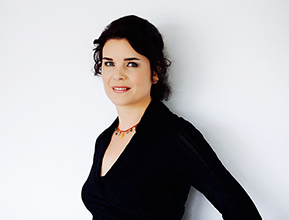Statistics never predict the fate of a single individual.
The true nature of cancer statistics are clearly explained for cancer patients through the journey of Stephan Jay Gould as explained in the following excerpt from Anticancer by David Servan-Schreiber, MD, PhD.
“Stephen Jay Gould was a professor of zoology at Harvard University and a specialist in the theory of evolution. He was only one of the most influential scientists of his generation, considered by many the ‘second Darwin’ for his more complete rendition of the evolution of species.
In July 1982, at the age of forty, he found that he was suffering from a mesothelioma of the abdomen—a rare and serious cancer attributed to exposure to asbestos. After his operation he asked his doctor, ‘What are the best technical articles on mesothelioma?’ Whereas until then she had always been very frank, the oncologist answered that ‘the medical literature on the subject contains nothing really worth reading.’ But trying to prevent an academic of his caliber from going over the literature on a subject that concerns him or her is, as Gould would later writer, a little like ‘recommending chastity to Homo sapiens, the sexiest primate of all.’
When he left the hospital, he went straight to the campus medical library and sat down at a table with a pile of recent medical journals. An hour later, horrified, he understood the reason for his doctor’s vague response. The scientific studies left no room for doubt: Mesothelioma was ‘incurable,’ with a median survival time of eight months after diagnosis. Like an animal suddenly caught in the claws of a predator, Gould could feel a panic taking over. He was physically and mentally stunned, and it took him a good fifteen minutes to recover.
Eventually, his training as a scholar asserted itself and saved him from despair. After all, he had spent his life studying and quantifying natural phenomena. If there was one lesson to be learned from that, it was that there is no fixed rule in nature that applies in like manner to everything. Variation is the very essence of nature. In nature, the median is an abstraction, a ‘law’ that the human mind tries to impose on the diverse profusion of individual cases. To the individual Gould, distinct from all other individuals, the question was where he was located in the range of variations surrounding the median.
The fact that the median survival was eight months, Gould reflected, meant that half of the individuals with mesothelioma survived less than eight months. Now, in which half did he belong? He was young, he didn’t smoke, he was in good health (except for his cancer), his tumor had been diagnosed at an early stage, and he could count on the best available treatment. So Gould concluded with relief that he had every reason to believe that he was in the promising half. So far, so good.
Then he became aware of a more fundamental issue. All curves plotting the survival time of each individual—so-called survival curve, have the same asymmetrical shape: By definition, half the cases are concentrated on the left-hand side of the curve, between zero and eight months.
But the other half, on the right, naturally spreads out beyond eight months, and the curve—the distribution, as it is called in statistics—always has a long tail that can extend to a considerable length of time. Nervously, Gould set about looking in the journals for a complete survival curve for mesothelioma. When he finally found one, he observed that the tail of the distribution actually spread out over several years. Thus, even if the median was only eight months, at the end of the tail is a small number of people survived for years with this disease. Gould didn’t see any reason why he too could not be found at the end of that long tail, and he breathed a sigh of relief.
Reinvigorated by these discoveries, the biologist in him came to a third realization that was as important as the other two: The survival curve he was looking at concerned people who had been treated ten to twenty years earlier. They had benefited from the treatments available then, under the conditions of that earlier time. In a domain like oncology, two things are continually changing: conventional treatments and our knowledge of what each of us can do individually to reinforce the effect of these treatments. If the circumstances change, the survival curve changes too. Perhaps with new treatment he would receive, and with a little luck, he would be part of a new curve with a higher median and a longer tail, which would go far, very far, as far as natural death in old age.
Stephen Jay Gould died twenty years later of another disease. He had had time to pursue one of the most admirable scientific careers of his era. Two months before his death, he was able to witness publication of his magnus opus, The Structure of Evolutionary Theory. He lived thirty times longer than the oncologists had predicted.
The lesson from this great biologist teaches us is simple: Statistics are information, not condemnation. The objective, when you have cancer and want to combat fatality, is to make sure you find yourself in the long tail of the curve.”
For More Information





